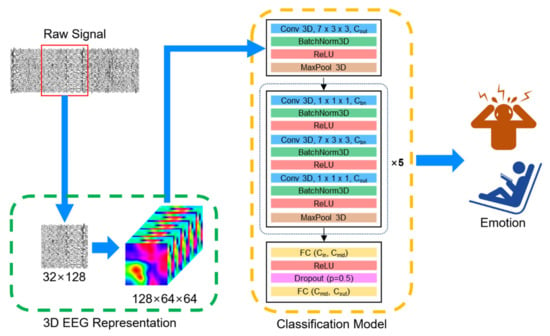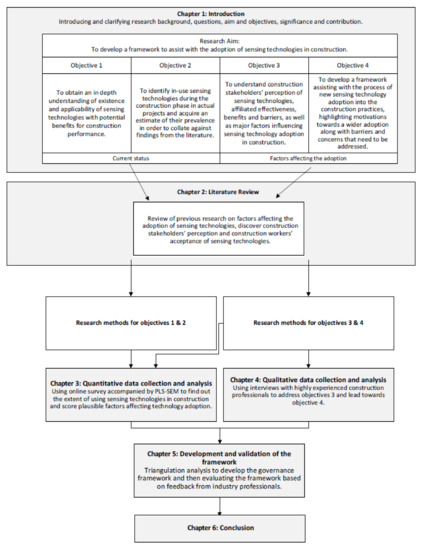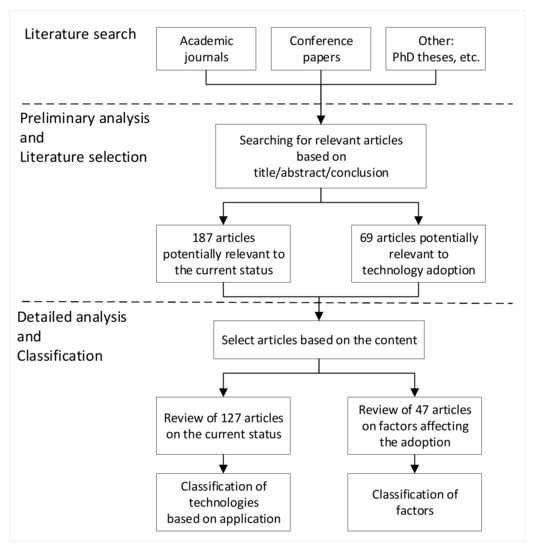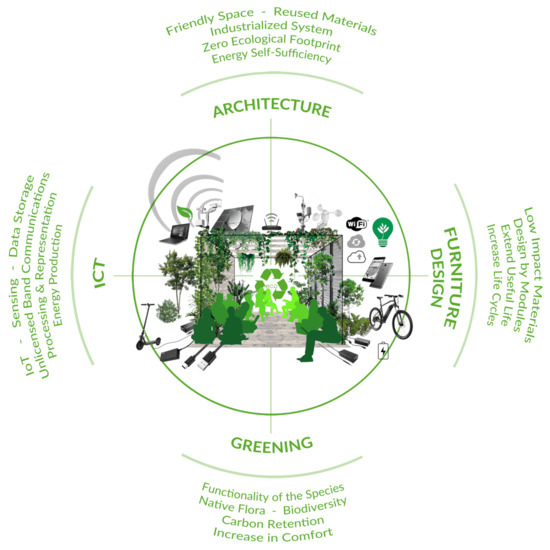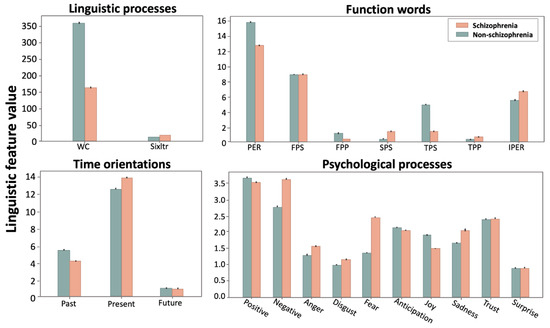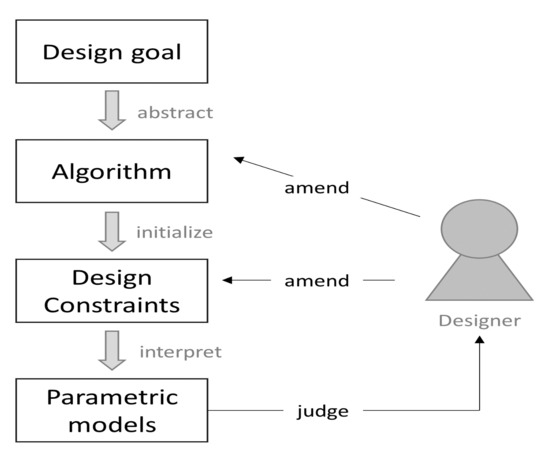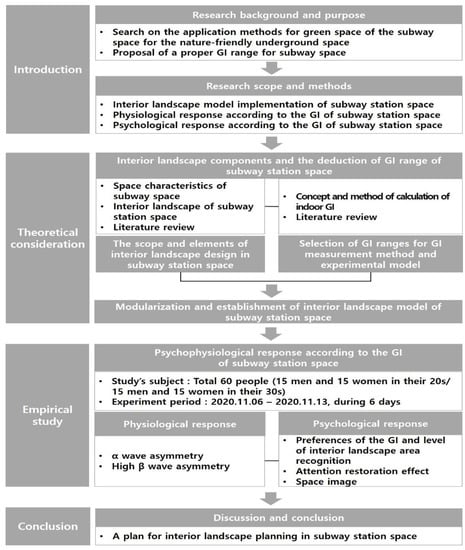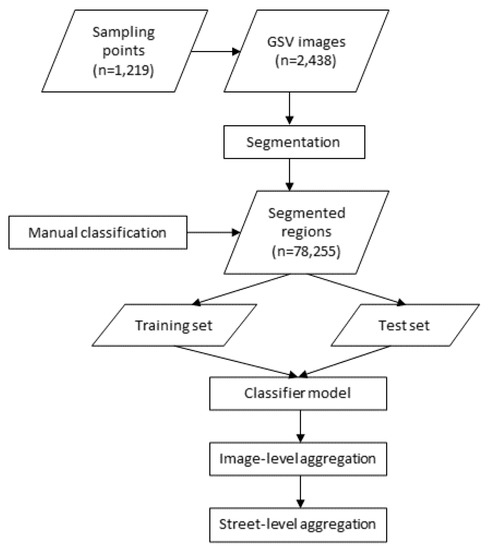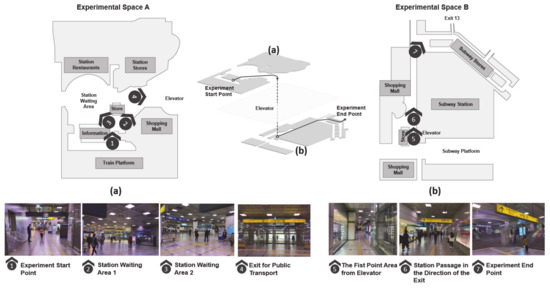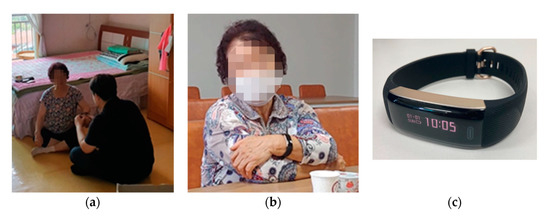Intelligent Sensors and Sensing Spaces for Smart Home and Environment
Share This Topical Collection
Editors
Topical Collection Information
Dear Colleagues,
Considerable research has been conducted on smart homes and environments in the domains of architecture, engineering and construction. Many studies on smart homes and environments have dealt with monitoring occupants’ behaviors and health to provide smart services allowing a comfortable life and independence of the occupants. Through combining intelligent sensors as part of the environment components, our living spaces have become interactive sensing spaces, affecting the experience of occupants.
We are currently facing a big challenge due to COVID-19 pandemic. Many experts are predicting that overall lifestyle and spatial experience will be changed, calling for new working, living styles and sustainable environments. Smart home equipped with sensors could be a center of urban activities and the sensing spaces would be one of the important research areas towards the realization of smart environments from a cognitive perspective.
The aim of this Special Issue is to contribute to the state-of-the-art, and to introduce the current developments focusing on the sensor technologies and sensing spaces contributing to smart homes and environments. We encourage submissions that apply various methodological approaches in either original research, present systematic reviews, theoretical models or new developments. We also welcome experimental works and envision of possible scenarios for smart environments on a strong theoretical foundation.
Prof. Dr. Mi Jeong Kim
Prof. Dr. Han Jong Jun
Collection Editors
Manuscript Submission Information
Manuscripts should be submitted online at www.mdpi.com by registering and logging in to this website. Once you are registered, click here to go to the submission form. Manuscripts can be submitted until the deadline. All submissions that pass pre-check are peer-reviewed. Accepted papers will be published continuously in the journal (as soon as accepted) and will be listed together on the collection website. Research articles, review articles as well as short communications are invited. For planned papers, a title and short abstract (about 100 words) can be sent to the Editorial Office for announcement on this website.
Submitted manuscripts should not have been published previously, nor be under consideration for publication elsewhere (except conference proceedings papers). All manuscripts are thoroughly refereed through a single-blind peer-review process. A guide for authors and other relevant information for submission of manuscripts is available on the Instructions for Authors page. Sensors is an international peer-reviewed open access semimonthly journal published by MDPI.
Please visit the Instructions for Authors page before submitting a manuscript.
The Article Processing Charge (APC) for publication in this open access journal is 2600 CHF (Swiss Francs).
Submitted papers should be well formatted and use good English. Authors may use MDPI's
English editing service prior to publication or during author revisions.
Keywords
- smart home
- smart environment
- intelligent sensor
- sensing architecture
- affective computing
- human–computer interaction
- building information modeling
Published Papers (17 papers)
Open AccessReview
A Systematic Comparison between the Ethereum and Hyperledger Fabric Blockchain Platforms for Attribute-Based Access Control in Smart Home IoT Environments
by
Stefan Pancari, Anik Rashid, Jason Zheng, Shirali Patel, Yi Wang and Jian Fu
Cited by 6 | Viewed by 2950
Abstract
Despite the lack of blockchain systems being utilized in modern IoT environments, the prevalence of blockchain technology is increasing, due to its high level of security and accountability. The integration of blockchain technology and access control in a decentralized system for smart home
[...] Read more.
Despite the lack of blockchain systems being utilized in modern IoT environments, the prevalence of blockchain technology is increasing, due to its high level of security and accountability. The integration of blockchain technology and access control in a decentralized system for smart home networks is a promising solution to this issue. This paper compares the implementation of attribute-based access control (ABAC) with two popular blockchain platforms, Ethereum and Hyperledger Fabric, for a smart home internet of things (IoT) environment. We present a comprehensive summary of access-control and blockchain-access-control methods, to provide the necessary background for this study. Additionally, we present an original ABAC smart contract for Ethereum, and the modification of a pre-existing Hyperledger Fabric ABAC smart contract, for this comparison. Through the simulation of both implementations, the advantages and limitations will be considered, to determine which is better suited for a smart home IoT environment.
Full article
►▼
Show Figures
Open AccessArticle
Smart Homes Supporting the Wellness of One or Two-Person Households
by
Myung Eun Cho and Mi Jeong Kim
Cited by 8 | Viewed by 2176
Abstract
The reduction in face-to-face contact and the increase in time spent at home during the ongoing coronavirus disease pandemic have resulted in increasing interest and demand for smart homes. Further, the rapid increase in the number of one-person and two-person households in Korea
[...] Read more.
The reduction in face-to-face contact and the increase in time spent at home during the ongoing coronavirus disease pandemic have resulted in increasing interest and demand for smart homes. Further, the rapid increase in the number of one-person and two-person households in Korea recently has led to these becoming representative household types. This study identifies the wellness characteristics of such households and proposes a direction for smart home development to help them lead healthy, happy lives. It focuses on mapping residents’ perceptions and experiences to scenarios and on identifying the functions required in smart homes and the technologies needed to provide these functions. It uses data from a survey to investigate and analyze the wellness characteristics of one- and two-person households in five dimensions and develops five scenarios of representative household types. By analyzing the developed scenarios, this study proposes smart homes that support the wellness of such households in six categories: exercise/sports, hobby/entertainment, social communications, occupation/work, self-development/education, and energy conservation. These households are exposed to digital environments from an early age and are familiar with the internet and technologies. Therefore, they are likely to adopt innovative technologies in housing. Thus, the smart home development proposed in this study is a promising strategic approach to housing planning.
Full article
►▼
Show Figures
Open AccessArticle
Accelerating 3D Convolutional Neural Network with Channel Bottleneck Module for EEG-Based Emotion Recognition
by
Sungkyu Kim, Tae-Seong Kim and Won Hee Lee
Cited by 10 | Viewed by 5133
Abstract
Deep learning-based emotion recognition using EEG has received increasing attention in recent years. The existing studies on emotion recognition show great variability in their employed methods including the choice of deep learning approaches and the type of input features. Although deep learning models
[...] Read more.
Deep learning-based emotion recognition using EEG has received increasing attention in recent years. The existing studies on emotion recognition show great variability in their employed methods including the choice of deep learning approaches and the type of input features. Although deep learning models for EEG-based emotion recognition can deliver superior accuracy, it comes at the cost of high computational complexity. Here, we propose a novel 3D convolutional neural network with a channel bottleneck module (CNN-BN) model for EEG-based emotion recognition, with the aim of accelerating the CNN computation without a significant loss in classification accuracy. To this end, we constructed a 3D spatiotemporal representation of EEG signals as the input of our proposed model. Our CNN-BN model extracts spatiotemporal EEG features, which effectively utilize the spatial and temporal information in EEG. We evaluated the performance of the CNN-BN model in the valence and arousal classification tasks. Our proposed CNN-BN model achieved an average accuracy of 99.1% and 99.5% for valence and arousal, respectively, on the DEAP dataset, while significantly reducing the number of parameters by 93.08% and FLOPs by 94.94%. The CNN-BN model with fewer parameters based on 3D EEG spatiotemporal representation outperforms the state-of-the-art models. Our proposed CNN-BN model with a better parameter efficiency has excellent potential for accelerating CNN-based emotion recognition without losing classification performance.
Full article
►▼
Show Figures
Open AccessEditorial
Intelligence Sensors and Sensing Spaces for Smart Home and Environment
by
Mi Jeong Kim and Han Jong Jun
Cited by 1 | Viewed by 2304
Abstract
Practitioners in the domains of architecture, engineering, and construction have conducted considerable research on smart homes and smart environments [...]
Full article
Open AccessArticle
A User-Centered Approach to the Application of BIM in Smart Working Environments
by
Da Yeon Park, Jungsik Choi, Soyeong Ryu and Mi Jeong Kim
Cited by 5 | Viewed by 2886
Abstract
Considerable research has been performed on smart working environments in the architecture, engineering, and construction industry, with building information modeling considered as a critical element for implementing intelligent working systems. Although much software has been developed, a lack of understanding inhibits a user-centered
[...] Read more.
Considerable research has been performed on smart working environments in the architecture, engineering, and construction industry, with building information modeling considered as a critical element for implementing intelligent working systems. Although much software has been developed, a lack of understanding inhibits a user-centered approach to the application of building information modeling in architectural design offices. This study focuses on usability factors for the development of software and proposes a direction for the adoption of building information modeling in architectural design offices. This study adopts a persona method that focuses on user experience, starting with a survey conducted in two large domestic architectural offices. For developing the persona scenarios, this study provides a conceptual framework of usability, identifies user demands, and characterizes user experience. Four representative personas were developed for the representative types of users in smart working environments. The persona scenarios provide a basis that directly reflects user needs and experiences regarding the use of building information modeling software in architectural design offices. Two implications of the application of building information modeling are proposed based on the scenarios: a user-friendly working environment for smart workflows and a customized training program focusing on user experience for the use of building information modeling software.
Full article
►▼
Show Figures
Open AccessArticle
A Governance Framework to Assist with the Adoption of Sensing Technologies in Construction
by
Mona Arabshahi, Di Wang, Yufei Wang, Payam Rahnamayiezekavat, Weichen Tang and Xiangyu Wang
Cited by 5 | Viewed by 2836
Abstract
Sensing technologies present great improvements in construction performance including the safety, productivity, and quality. However, the corresponding applications in real projects are far behind compared with the academically research. This research aims to discover dominate influence factors in the sensing technologies adoption and
[...] Read more.
Sensing technologies present great improvements in construction performance including the safety, productivity, and quality. However, the corresponding applications in real projects are far behind compared with the academically research. This research aims to discover dominate influence factors in the sensing technologies adoption and ultimately develop a governance framework facilitating adoption processes. The framework is dedicated on general sensing technologies rather than single sensor in previous framework studies. To begin with, the influence factors of sensing technologies and other similar emerging technologies are summarised through a review. Then, a mixed methods design was employed to collect quantitative data through an online survey, and qualitative data through semi-structured interviews. Findings of the quantitative method reveal that the most widely implemented sensing technologies are GPS and visual sensing technology, but they’re still not adopted by all construction companies. Partial Least Squares Structural Equation Modelling reveals that supplier characteristics have the highest effect in all influence factors. Qualitative method was adopted to investigate perceptions of construction stakeholders on the major decision-making considerations in the adoption process. Ultimately, a triangulation analysis of findings from the literature review, online survey and interviews resulted in the governance framework development. The overarching contribution of this research focus on the general adoption of sensing technologies rather than the adoption of a specific sensor. Therefore, the governance framework can assist with the decision-making process of any sensing technology adoption in construction.
Full article
►▼
Show Figures
Open AccessReview
Review on Sensing Technology Adoption in the Construction Industry
by
Mona Arabshahi, Di Wang, Junbo Sun, Payam Rahnamayiezekavat, Weichen Tang, Yufei Wang and Xiangyu Wang
Cited by 24 | Viewed by 7502
Abstract
Sensing technologies demonstrate promising potential in providing the construction industry with a safe, productive, and high-quality process. The majority of sensing technologies in the construction research area have been focused on construction automation research in prefabrication, on-site operation, and logistics. However, most of
[...] Read more.
Sensing technologies demonstrate promising potential in providing the construction industry with a safe, productive, and high-quality process. The majority of sensing technologies in the construction research area have been focused on construction automation research in prefabrication, on-site operation, and logistics. However, most of these technologies are either not implemented in real construction projects or are at the very early stages in practice. The corresponding applications are far behind, even in extensively researched aspects such as Radio Frequency Identification, ultra-wideband technology, and Fiber Optic Sensing technology. This review systematically investigates the current status of sensing technologies in construction from 187 articles and explores the reasons responsible for their slow adoption from 69 articles. First, this paper identifies common sensing technologies and investigates their implementation extent. Second, contributions and limitations of sensing technologies are elaborated to understand the current status. Third, key factors influencing the adoption of sensing technologies are extracted from construction stakeholders’ experience. Demand towards sensing technologies, benefits and suitability of them, and barriers to their adoption are reviewed. Lastly, the governance framework is determined as the research tendency facilitating sensing technologies adoption. This paper provides a theoretical basis for the governance framework development. It will promote the sensing technologies adoption and improve construction performance including safety, productivity, and quality.
Full article
►▼
Show Figures
Open AccessArticle
Smart Tree: An Architectural, Greening and ICT Multidisciplinary Approach to Smart Campus Environments
by
Sergio Fortes, Noelia Hidalgo-Triana, Juan-Manuel Sánchez-la-Chica, María-Luz García-Ceballos, Juan Cantizani-Estepa, Andrés-Vicente Pérez-Latorre, Eduardo Baena, Andrés Pineda, Jorge Barrios-Corpa and Alberto García-Marín
Cited by 12 | Viewed by 5412
Abstract
At present, climate change, pollution, and uncontrolled urbanism threaten not only natural ecosystems, but also the urban environment. Approaches to mitigate these challenges and able to provide an alternative for the use of the space are deemed to be multidisciplinary, combining architecture, vegetation
[...] Read more.
At present, climate change, pollution, and uncontrolled urbanism threaten not only natural ecosystems, but also the urban environment. Approaches to mitigate these challenges and able to provide an alternative for the use of the space are deemed to be multidisciplinary, combining architecture, vegetation integration, circular economy and information and communications technologies (ICT). University campuses are a key scenario to evaluate such solutions as their student and research community is intrinsically willing to support these experiences and provide a wide knowledge on the fields necessary for their design and implementation. However, the creation of areas combining usability and sustainability is commonly lacking a multidisciplinary approach combining all these different perspectives. Hence, the present work aims to overcome this limitation by the development of a novel integrated approach for campus spaces for co-working and leisure, namely a “Smart Tree”, where novel architecture, furniture design, flora integration, environmental sensoring and communications join together. To this end, a survey of the literature is provided, covering related approaches as well as general principles behind them. From this, the general requirements and constraints for the development of the Smart Tree area are identified, establishing the main interactions between the architecture, greening and ICT perspectives. Such requirements guide the proposed system design and implementation, whose impact on the environment is analyzed. Finally, the research challenges and lessons learned for their development are identified in order to support future works.
Full article
►▼
Show Figures
Open AccessArticle
Schizophrenia Detection Using Machine Learning Approach from Social Media Content
by
Yi Ji Bae, Midan Shim and Won Hee Lee
Cited by 38 | Viewed by 7797
Abstract
Schizophrenia is a severe mental disorder that ranks among the leading causes of disability worldwide. However, many cases of schizophrenia remain untreated due to failure to diagnose, self-denial, and social stigma. With the advent of social media, individuals suffering from schizophrenia share their
[...] Read more.
Schizophrenia is a severe mental disorder that ranks among the leading causes of disability worldwide. However, many cases of schizophrenia remain untreated due to failure to diagnose, self-denial, and social stigma. With the advent of social media, individuals suffering from schizophrenia share their mental health problems and seek support and treatment options. Machine learning approaches are increasingly used for detecting schizophrenia from social media posts. This study aims to determine whether machine learning could be effectively used to detect signs of schizophrenia in social media users by analyzing their social media texts. To this end, we collected posts from the social media platform Reddit focusing on schizophrenia, along with non-mental health related posts (fitness, jokes, meditation, parenting, relationships, and teaching) for the control group. We extracted linguistic features and content topics from the posts. Using supervised machine learning, we classified posts belonging to schizophrenia and interpreted important features to identify linguistic markers of schizophrenia. We applied unsupervised clustering to the features to uncover a coherent semantic representation of words in schizophrenia. We identified significant differences in linguistic features and topics including increased use of third person plural pronouns and negative emotion words and symptom-related topics. We distinguished schizophrenic from control posts with an accuracy of 96%. Finally, we found that coherent semantic groups of words were the key to detecting schizophrenia. Our findings suggest that machine learning approaches could help us understand the linguistic characteristics of schizophrenia and identify schizophrenia or otherwise at-risk individuals using social media texts.
Full article
►▼
Show Figures
Open AccessReview
Generative Design in Building Information Modelling (BIM): Approaches and Requirements
by
Wei Ma, Xiangyu Wang, Jun Wang, Xiaolei Xiang and Junbo Sun
Cited by 50 | Viewed by 10649
Abstract
The integration of generative design (GD) and building information modelling (BIM), as a new technology consolidation, can facilitate the constructability of GD’s automatic design solutions, while improving BIM’s capability in the early design phase. Thus, there has been an increasing interest to study
[...] Read more.
The integration of generative design (GD) and building information modelling (BIM), as a new technology consolidation, can facilitate the constructability of GD’s automatic design solutions, while improving BIM’s capability in the early design phase. Thus, there has been an increasing interest to study GD-BIM, with current focuses mainly on exploring applications and investigating tools. However, there are a lack of studies regarding methodological relationships and skill requirement based on different development objectives or GD properties; thus, the threshold of developing GD-BIM still seems high. This study conducts a critical review of current approaches for developing GD in BIM, and analyses methodological relationships, skill requirements, and improvement of GD-BIM development. Accordingly, novel perspectives of objective-oriented, GD component-based, and skill-driven GD-BIM development as well as reference guides are proposed. Finally, future research directions, challenges, and potential solutions are discussed. This research aims to guide designers in the building industry to properly determine approaches for developing GD-BIM and inspire researchers’ future studies.
Full article
►▼
Show Figures
Open AccessArticle
A Preference-Driven Smart Home Service for the Elderly’s Biophilic Experience
by
Eun-Ji Lee and Sung-Jun Park
Cited by 9 | Viewed by 3435
Abstract
Smart home services (SHS) should support the positive experiences of the elderly in homes with a focus on getting closer to nature. The study identified the services preferred by the elderly through a survey on the biophilic experience-based SHS, and to discuss the
[...] Read more.
Smart home services (SHS) should support the positive experiences of the elderly in homes with a focus on getting closer to nature. The study identified the services preferred by the elderly through a survey on the biophilic experience-based SHS, and to discuss the configuration of the sensors and devices required to provide the service. We reorganized the biophilic experience-based SHS and related sensors and devices, focusing on our previous study, and developed a survey instrument. A preference survey was conducted on 250 adults aged 20 and older, and the SPSS program was used for a factor analysis and independent two-sample T-test. We derived six factors for biophilic experience-based SHS. Compared to other age groups, the elderly preferred services that were mainly attributed to factors such as ‘Immersion and interaction with nature’ (A), ‘Management of well-being and indoor environmental quality (IEQ)’ (B), and ‘Natural process and systems’ (F). We proposed 15 prioritized services, along with their sensor and device configurations, in consideration of service provision regarding the elderly’s preferences and universality. This study contributes to new developments in elderly-friendly smart home research by converting bio-friendly ideas into the market in the development of medical services and SHS for the elderly.
Full article
Open AccessArticle
Psychophysiological Response According to the Greenness Index of Subway Station Space
by
Won-Ji Kim and Tae-Kyung Lee
Cited by 5 | Viewed by 3051
Abstract
This study proposed a plan for implementing a pleasant and healthy indoor landscape in subway station space. To this end, it established a 3D landscape model of the subway interior by reviewing previous studies on indoor landscape and the greenness index of indoor
[...] Read more.
This study proposed a plan for implementing a pleasant and healthy indoor landscape in subway station space. To this end, it established a 3D landscape model of the subway interior by reviewing previous studies on indoor landscape and the greenness index of indoor spaces. Moreover, it investigated and analyzed psychophysiological responses of users to environmental indoor landscape design in subway station space. Subway stations were classified as underground subway stations and ground subway stations according to the presence of natural light inflow. The greenness index of indoor spaces was also divided into four types of 0%, 10%, 15%, and 20%. Through this process, eight 3D landscape models of the subway interior were implemented. In addition, this study investigated psychophysiological responses of 60 male and female adults in their 20 s and 30 s using the models implemented. The investigation result was analyzed based on a frequency analysis, the χ
2 test,
T-test, one-way analysis of variance, and multidimensional scaling, which were performed in SPSS Statistics 25. The results of this study can be summarized as follows. First, physiological responses of research subjects were analyzed based on their prefrontal α wave asymmetric values. The analytic result showed that the environment where interior landscape was adopted produced more positive effects than the environment where interior landscape was not adopted. Second, psychological responses of research subjects were examined based on their greenness index preference, awareness of interior landscape area, attention restoration effect, and space images. The analytic result indicated that, among eight 3D landscape models of the subway interior, they preferred the model with the greenness index of 15% for underground subway stations. In addition, they preferred the model with the greenness index of 10% the most for ground subway stations.
Full article
►▼
Show Figures
Open AccessReview
Characterizing Smart Environments as Interactive and Collective Platforms: A Review of the Key Behaviors of Responsive Architecture
by
Ju Hyun Lee, Michael J. Ostwald and Mi Jeong Kim
Cited by 16 | Viewed by 5418
Abstract
Since architect Nicholas Negroponte first proposed a vision of responsive architecture smart environments have been widely investigated, especially in the fields of computer science and engineering. Despite growing interest in the topic, a comprehensive review of research about smart environments from the architectural
[...] Read more.
Since architect Nicholas Negroponte first proposed a vision of responsive architecture smart environments have been widely investigated, especially in the fields of computer science and engineering. Despite growing interest in the topic, a comprehensive review of research about smart environments from the architectural perspective is largely missing. In order to provide a formal understanding of smart environments in architecture, this paper conducts a systematic literature review of scholarly sources over the last decade, focusing on four related subjects: (1) responsive architecture, (2) kinetic architecture, (3) adaptive architecture and (4) intelligent buildings. Through this review, the paper identifies and examines
interactive and
collective behaviors in smart environments, thereby contributing to defining the properties of creative, smart spaces in the contemporary digital ecosystem. In addition, this research offers a means of systematically characterizing and constructing smart environments as
interactive and
collective platforms, enabling occupants to sense, experience and understand smart spaces.
Full article
►▼
Show Figures
Open AccessArticle
Developing Sidewalk Inventory Data Using Street View Images
by
Bumjoon Kang, Sangwon Lee and Shengyuan Zou
Cited by 20 | Viewed by 4137
Abstract
(1) Background: Public sidewalk GIS data are essential for smart city development. We developed an automated street-level sidewalk detection method with image-processing Google Street View data. (2) Methods: Street view images were processed to produce graph-based segmentations. Image segment regions were manually labeled
[...] Read more.
(1) Background: Public sidewalk GIS data are essential for smart city development. We developed an automated street-level sidewalk detection method with image-processing Google Street View data. (2) Methods: Street view images were processed to produce graph-based segmentations. Image segment regions were manually labeled and a random forest classifier was established. We used multiple aggregation steps to determine street-level sidewalk presence. (3) Results: In total, 2438 GSV street images and 78,255 segmented image regions were examined. The image-level sidewalk classifier had an 87% accuracy rate. The street-level sidewalk classifier performed with nearly 95% accuracy in most streets in the study area. (4) Conclusions: Highly accurate street-level sidewalk GIS data can be successfully developed using street view images.
Full article
►▼
Show Figures
Open AccessArticle
The Influence of Users’ Spatial Familiarity on Their Emotional Perception of Space and Wayfinding Movement Patterns
by
Ju Yeon Kim, Jin Kyung Choi, Won Hee Han and Jong Ha Kim
Cited by 11 | Viewed by 3526
Abstract
In order to evaluate the sensory perceptions of users who visited a train station, this study aimed to conduct an evaluation of their spatial emotions and identify the distance and type of transfer. For evaluation and verification, emotional recognition and wayfinding types were
[...] Read more.
In order to evaluate the sensory perceptions of users who visited a train station, this study aimed to conduct an evaluation of their spatial emotions and identify the distance and type of transfer. For evaluation and verification, emotional recognition and wayfinding types were analyzed according to types in the groups (gender, age, and spatial familiarity) of experimental participants. There were two research questions: “Will the length of movement patterns in the experiment environment vary depending on the types of the participant group?” and “Is there any moderating effect in the interaction between spatial familiarity and the types of the participant groups?” A total of 28 participants were recruited with consideration of gender, age, and familiarity with spatial experience, which were used to analyze the participant groups. The experiment was conducted at a train station, and a vignette was presented to the participants to record the route and pattern of their wayfinding, followed by providing a questionnaire to record their spatial perception. SPSS was used to conduct a T-test, factor analysis, and multidimensional scaling (MDS). The differences in spatial perception were arranged in visual positioning based on emotional vocabulary, and average movement distances in the participant groups were compared in accordance with the type of wayfinding and interaction effect by ANOVA. The results showed that there was a difference in spatial perception depending on the negative emotional vocabulary and type of participant. An emotional positioning map for average comparison was prepared for each participant group (gender, age, and spatial familiarity) by using the factors extracted in the factor analysis (emotional factor, management factor, and aesthetic factor). Female and unfamiliar groups displayed negative results in the emotional factor (F = 7.202,
p < 0.05). In addition, male and familiar groups displayed negative results in the management factor (F = 3.058,
p < 0.10). In wayfinding, there was an interaction between gender and the resident group based on the status of their spatial familiarity. Through this, it was possible to extract negative emotional evaluations according to the type of participant and the interaction factors for the type and length of the wayfinding.
Full article
►▼
Show Figures
Open AccessArticle
Self-Organized Crowd Dynamics: Research on Earthquake Emergency Response Patterns of Drill-Trained Individuals Based on GIS and Multi-Agent Systems Methodology
by
Hai Sun, Lanling Hu, Wenchi Shou and Jun Wang
Cited by 13 | Viewed by 4230
Abstract
Predicting evacuation patterns is useful in emergency management situations such as an earthquake. To find out how pre-trained individuals interact with one another to achieve their own goal to reach the exit as fast as possible firstly, we investigated urban people’s evacuation behavior
[...] Read more.
Predicting evacuation patterns is useful in emergency management situations such as an earthquake. To find out how pre-trained individuals interact with one another to achieve their own goal to reach the exit as fast as possible firstly, we investigated urban people’s evacuation behavior under earthquake disaster coditions, established crowd response rules in emergencies, and described the drill strategy and exit familiarity quantitatively through a cellular automata model. By setting different exit familiarity ratios, simulation experiments under different strategies were conducted to predict people’s reactions before an emergency. The corresponding simulation results indicated that the evacuees’ training level could affect a multi-exit zone’s evacuation pattern and clearance time. Their exit choice preferences may disrupt the exit options’ balance, leading to congestion in some of the exits. Secondly, due to people’s rejection of long distances, congestion, and unfamiliar exits, some people would hesitant about the evacuation direction during the evacuation process. This hesitation would also significantly reduce the overall evacuation efficiency. Finally, taking a community in Zhuhai City, China, as an example, put forward the best urban evacuation drill strategy. The quantitative relation between exit familiar level and evacuation efficiency was obtained. The final results showed that the optimized evacuation plan could improve evacuation’s overall efficiency through the self-organization effect. These studies may have some impact on predicting crowd behavior during evacuation and designing the evacuation plan.
Full article
►▼
Show Figures
Open AccessArticle
Elderly Perception on the Internet of Things-Based Integrated Smart-Home System
by
Tae Hee Jo, Jae Hoon Ma and Seung Hyun Cha
Cited by 64 | Viewed by 9069
Abstract
An integrated smart home system (ISHS) is an effective way to improve the quality of life of the elderly. The elderly’s willingness is essential to adopt an ISHS; to the best of our knowledge, no study has investigated the elderly’s perception of ISHS.
[...] Read more.
An integrated smart home system (ISHS) is an effective way to improve the quality of life of the elderly. The elderly’s willingness is essential to adopt an ISHS; to the best of our knowledge, no study has investigated the elderly’s perception of ISHS. Consequently, this study aims to investigate the elderly’s perception of the ISHS by comprehensively evaluating its possible benefits and negative responses. A set of sensors required for an ISHS was determined, and interviews were designed based on four factors: perceived comfort, perceived usability, perceived privacy, and perceived benefit. Subsequently, technological trials of the sensor-set followed by two focus group interviews were conducted on nine independently living elderly participants at a senior welfare center in South Korea. Consistent with previous studies, the results of this investigation indicate that elderly participants elicited negative responses regarding usability complexity, and discomfort to daily activities. Despite such negative responses, after acquiring enough awareness about the ISHS’s benefits, the elderly acknowledged its necessity and showed a high level of willingness. Furthermore, these results indicate that for a better adoption of an ISHS, sufficient awareness regarding its benefits and development of elderly-friendly smart home sensors that minimize negative responses are required.
Full article
►▼
Show Figures








